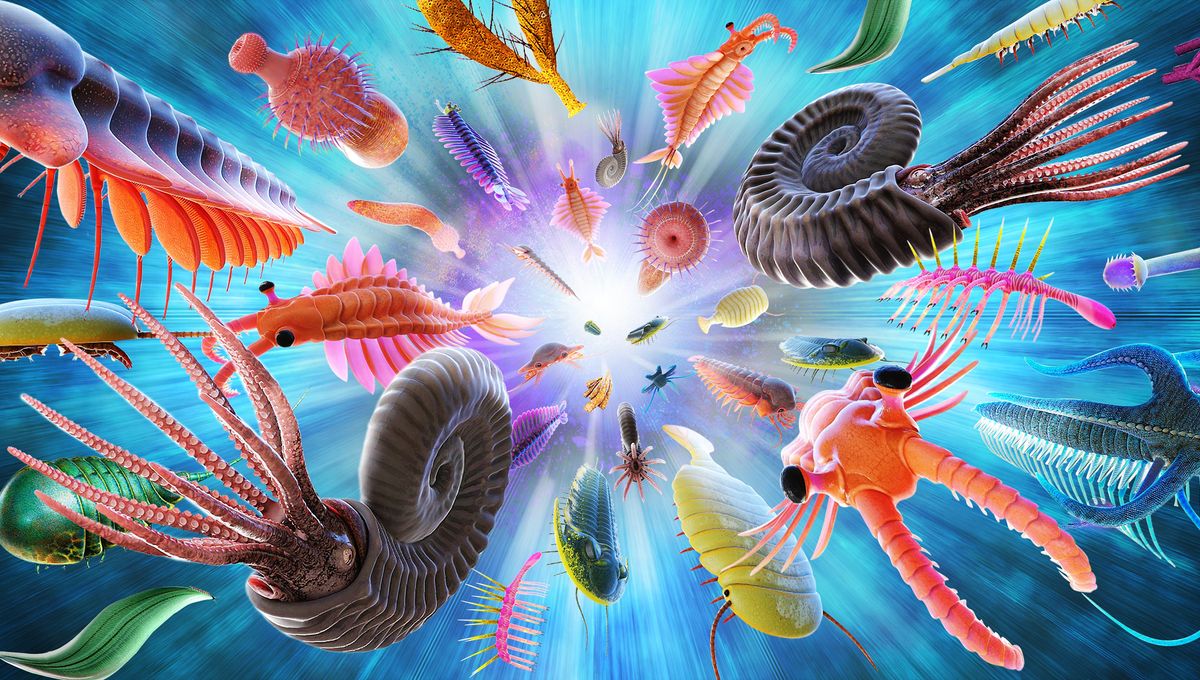
Time to cast your minds a long way back into Earth’s geological history, approximately 541 million years, to the beginning of the Paleozoic Era. This is a period long before the arrival of the dinosaurs and long long before modern animals we see today, right to the beginning of the appearance of the first ancestors to some of the major phyla we now know.
The Cambrian Period occurred approximately between 541 million to 485.4 million years ago and contained, within that time, the Cambrian Explosion. This explosion is characterized as an unparalleled rise or “explosion” in different kinds of organisms. This Cambrian explosion produced the biggest burst of evolution to ever happen in the history of the Earth. Some surviving groups include the echinoderms, mollusks, worms, and arthropods, all of which still persist in the modern day. Chordates, a group to which all vertebrate animals belong – including humans – arose during this rapid period of evolution. Of course, lots of the organisms that arose during this period, such as the trilobites, did not survive. However, the phyla that did survive are the main groups from which most modern life evolved from.
Exactly what caused the Cambrian explosion is a hotly debated topic. Before the Cambrian, roughly 570 million years ago, we largely only have the Ediacaran period preserved in the fossil record. Life was entirely aquatic, with a mat of microbes over the sea floor and only grazing organisms present in this extremely low-oxygen underwater world.
After the explosion, this ecosystem would change dramatically as animals developed vision, legs, and predator-prey relationships started to evolve. Some researchers think that rising oxygen levels in the Earth’s atmosphere at that time allowed larger, more complex animals to begin to exist. Others think that changing ecological relationships between predators and prey, competition, and increased niche availability was the mechanism driving the massive evolutionary diversity.
“It’s when most of the few dozen major animal body plans first appear in the fossil record and diversify,” explains Dr Greg Edgecombe, Merit Researcher at the Natural History Museum, London, in an article on their website. “But it is actually more than that […] It is a time of body plan innovation and of diversification, but it is also an ecological phenomenon as life responded to changing environmental conditions.”
While it may be hard to imagine, the Cambrian explosion wasn’t a single event but rather an evolutionary period over several million years. The results were a rapid change in animal body plans, animal size, and the adaptation of biomineralized skeletons. Some suggest that the term “explosion” is misleading, suggesting more that the lines between the Cambrian and the Ediacaran bleed together and Ediacaran organisms were still surviving into the Cambrian time frame.
“We found that the factors behind that explosion, namely community complexity and niche adaptation, actually started during the Ediacaran, much earlier than previously thought,” said co-author of a 2022 paper on the topic, Dr Emily Mitchell, in a statement. “The Ediacaran was the fuse that lit the Cambrian explosion.”
While there are still a lot of questions surrounding the Cambrian Explosion, there is no doubt of the significance of the event and the subsequent biological results of the rise in animal diversity. After all, without it, life as we know it wouldn’t have begun.
Source Link: What Was The Cambrian Explosion and Why Was It Important?